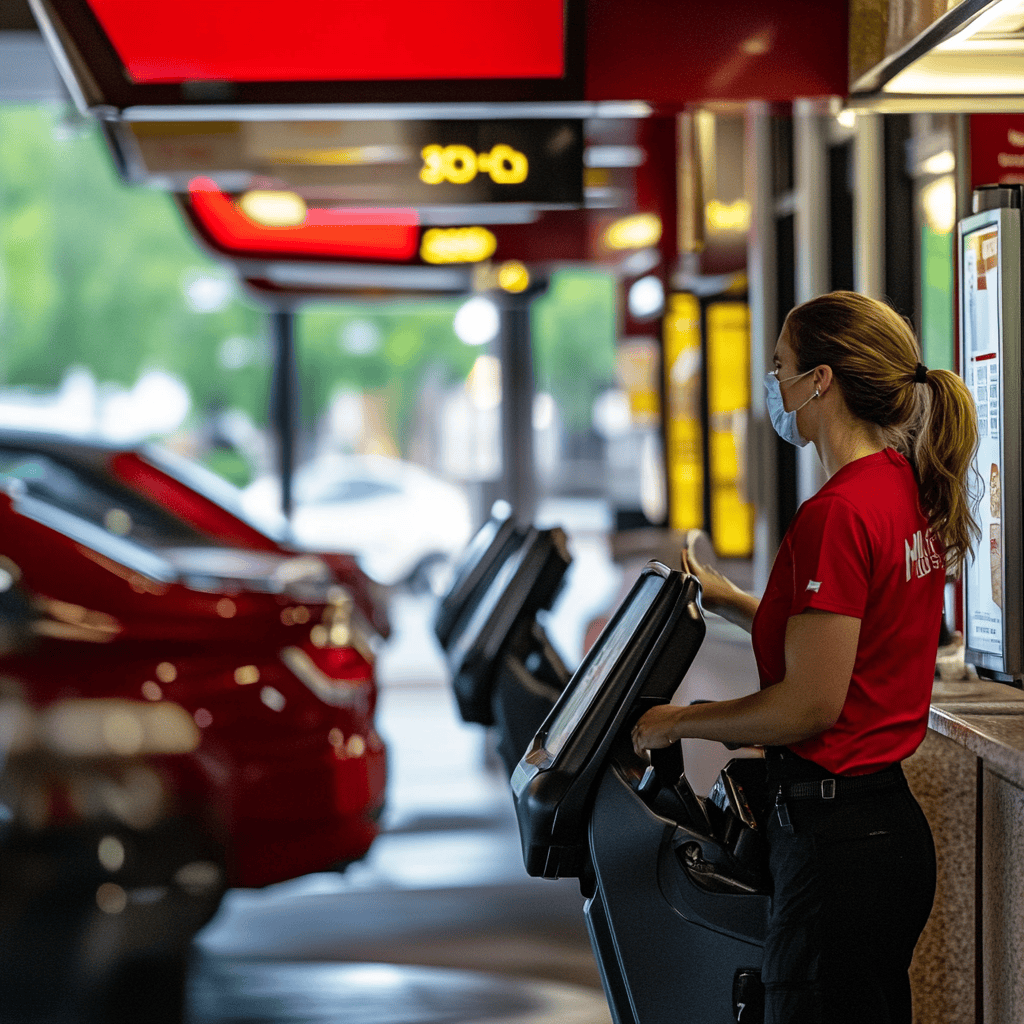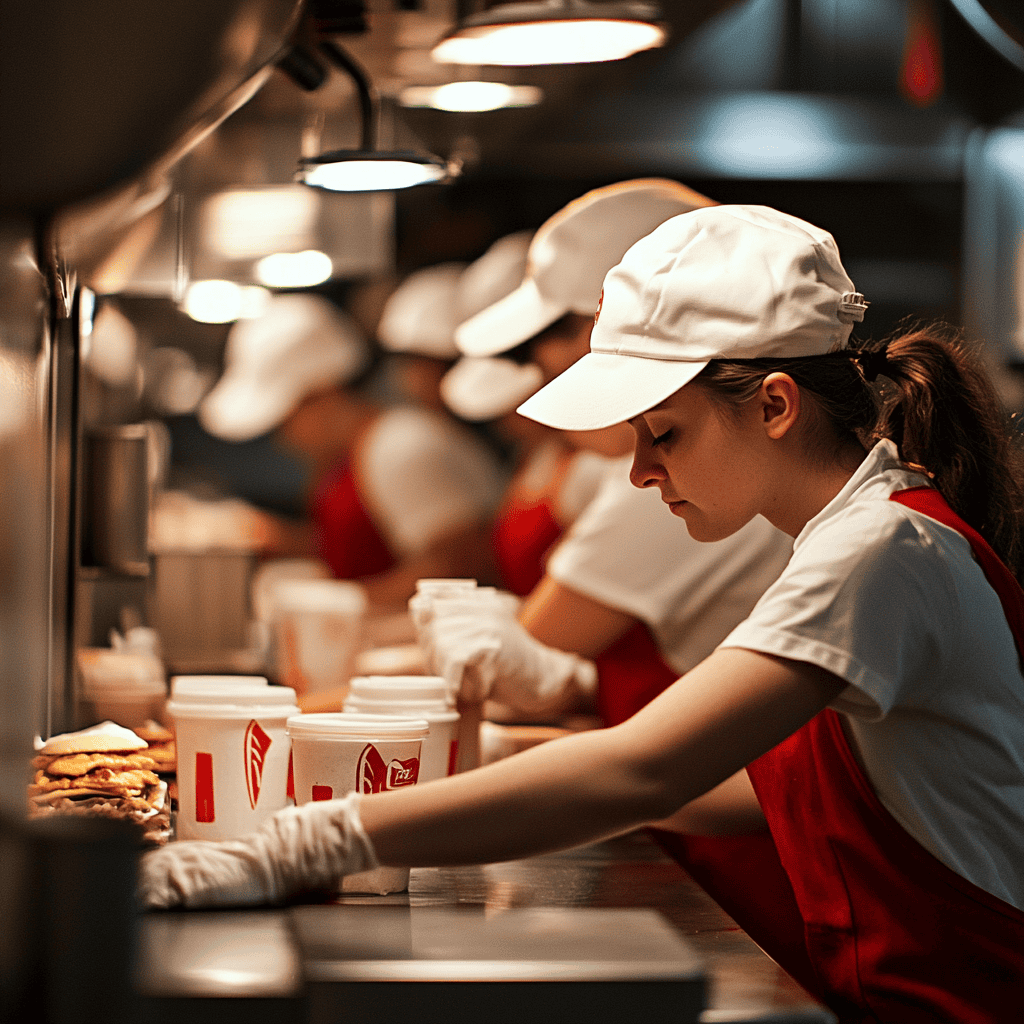
Drive-thru restaurants are a go-to for many people looking for a quick meal. But nothing frustrates customers more than sitting in a long drive-thru lane, especially in a hurry. Three-quarters of fast-food diners expect their orders in five minutes or less. Slow service annoys customers and decreases the chances of them coming back.
Here are six practical tips for speeding up your drive-thru lanes and keeping customers happy.
1. Optimize the Drive-Thru Layout
Optimizing your drive-thru layout is one of the easiest ways to reduce wait times. If space allows, consider adding a second drive-thru lane. This helps manage more cars simultaneously and reduces peak-hour bottlenecks.
Fast food chains with four drive-thru lanes can serve customers faster by efficiently distributing traffic across multiple lanes. A simple change like moving the menu boards slightly closer to the ordering window can shave precious seconds off each order.
2. Upgrade Your Technology
Technology is your friend when it comes to speeding up service. Digital menu boards can be quickly updated with promotions, seasonal items, and menu changes, reducing the need for employees to communicate changes manually.
These innovations can also help save money on labor costs. Real-time monitoring and analytics systems can predict popular menu items based on time of day, past consumer behavior, and usage patterns, allowing restaurants to prepare items faster and more efficiently.
3. Train Employees for Peak Efficiency
Your employees are the backbone of your drive-thru service, and proper training can significantly reduce wait times. Focus on training them to multitask, handle payments quickly, and manage orders accurately. Having enough staff during peak periods is also essential to avoid delays. Proper employee training reduces service times in drive-thrus.
Focusing on efficiency and customer service will speed up your lanes and improve customer experience. This also ensures that employees understand the importance of safety and convenience.
4. Utilize Off-Peak Hours

Off-peak hours are an often overlooked opportunity to prepare for busier times. Use these quieter periods to stock up on popular items, conduct maintenance, or train employees on new systems. Offering special promotions during off-peak times can also encourage residential customers to visit during these quieter hours, reducing congestion during peak periods.
Many restaurants already use this strategy to balance their traffic and maximize efficiency. For example, a restaurant might promote specific menu items that are quicker to prepare or require less power during energy-intensive periods, helping to optimize electricity usage.
5. Monitor and Analyze Traffic Patterns
Understanding the traffic patterns at your restaurant location can provide helpful insights into when and where delays are most likely to occur. Use data from your POS system or install cameras to monitor the drive-thru lane. This information can help you make informed decisions about staffing, stocking, and even the placement of your drive-thru lanes. For instance, if your drive-thru slows down, especially during lunch, you might consider adding more staff or opening a second lane during those hours.
6. Innovate with Pickup Windows and Walk-Up Options
In recent years, many drive-thrus have added pickup windows and walk-up options to their locations. These innovations help to serve customers who don’t want to wait in line or need to grab their food quickly. You can reduce the strain on your drive-thru lanes and improve service speed by offering alternative ways to order food and pick up meals.
These options also cater to a broader audience, including those who prefer not to use the drive-thru lane. For example, some customers might prefer the convenience of a walk-up window during summer when they can quickly order food without staying in their cars. This drive-thru innovation can free up parking spaces for dine-in customers, enhancing the customer experience.
Maximizing Drive-Thru Efficiency: Key Takeaways
Faster service means serving more customers in less time, leading to higher sales and better customer retention. You can enhance your drive-thru performance by optimizing your layout, upgrading technology, training your employees, utilizing off-peak hours, monitoring traffic patterns, and innovating new service options.
Drive-thru lanes are the heartbeat of the quick-service restaurant industry. When optimized, they can transform customer experiences and keep them coming back again and again.

